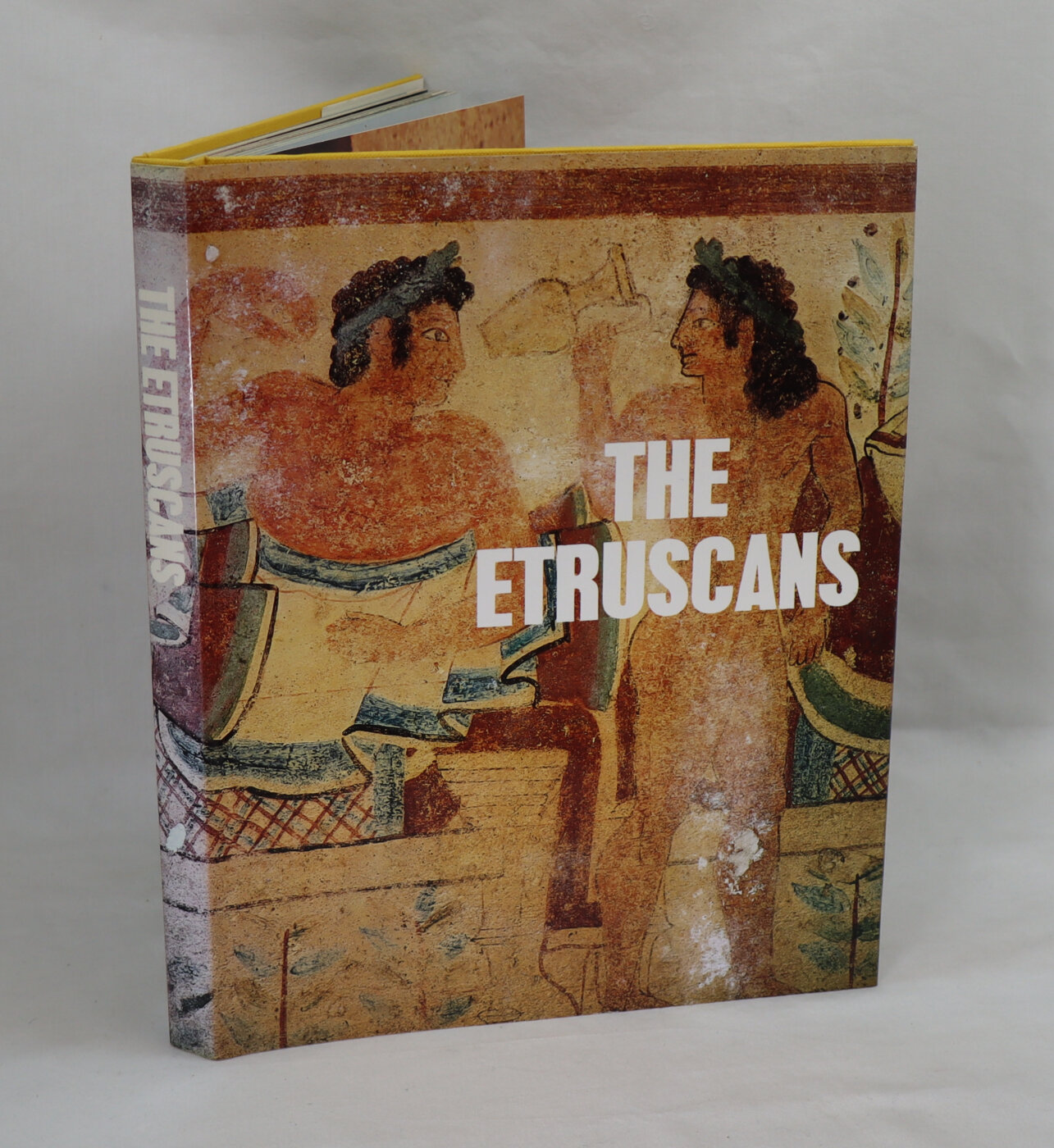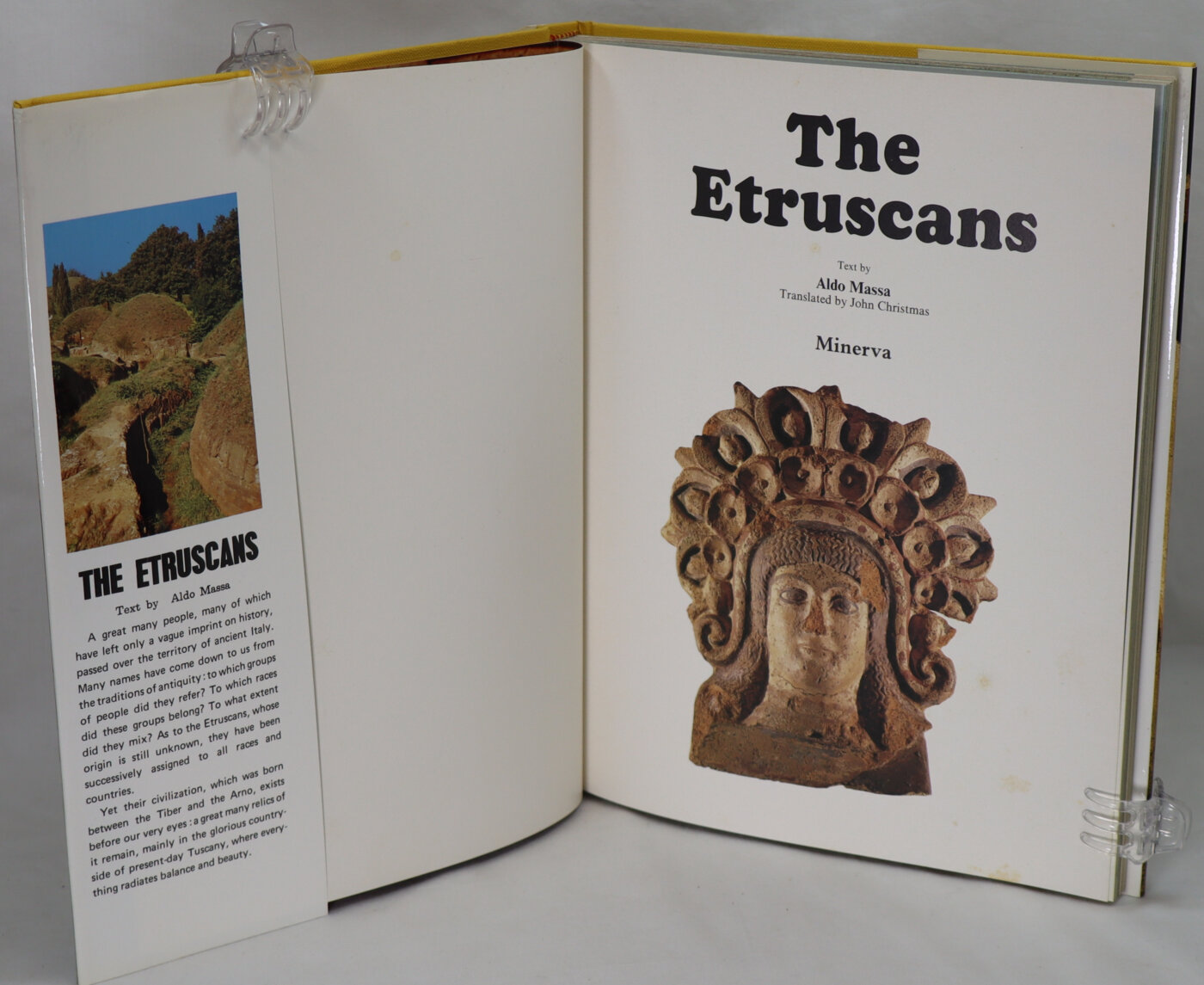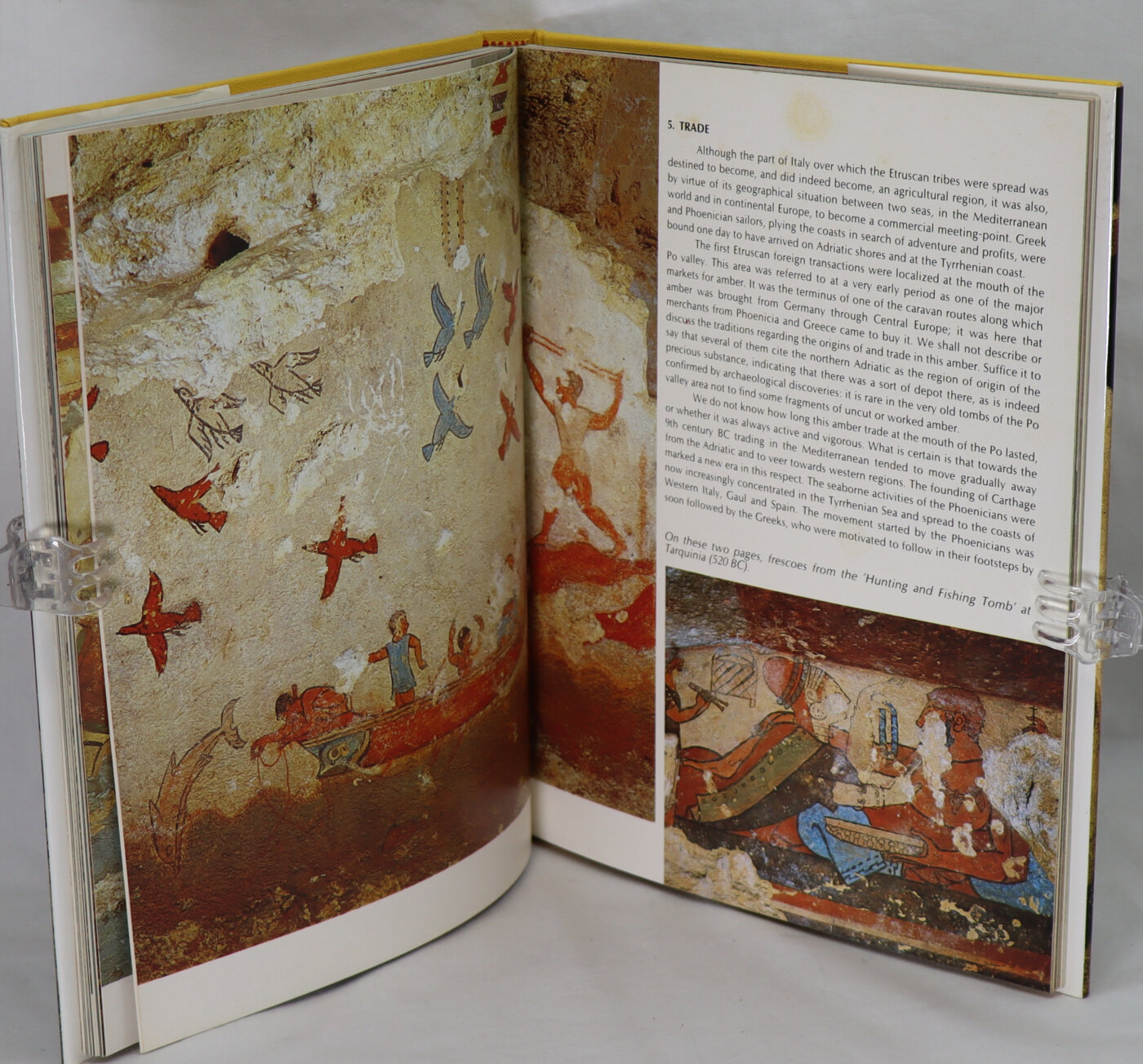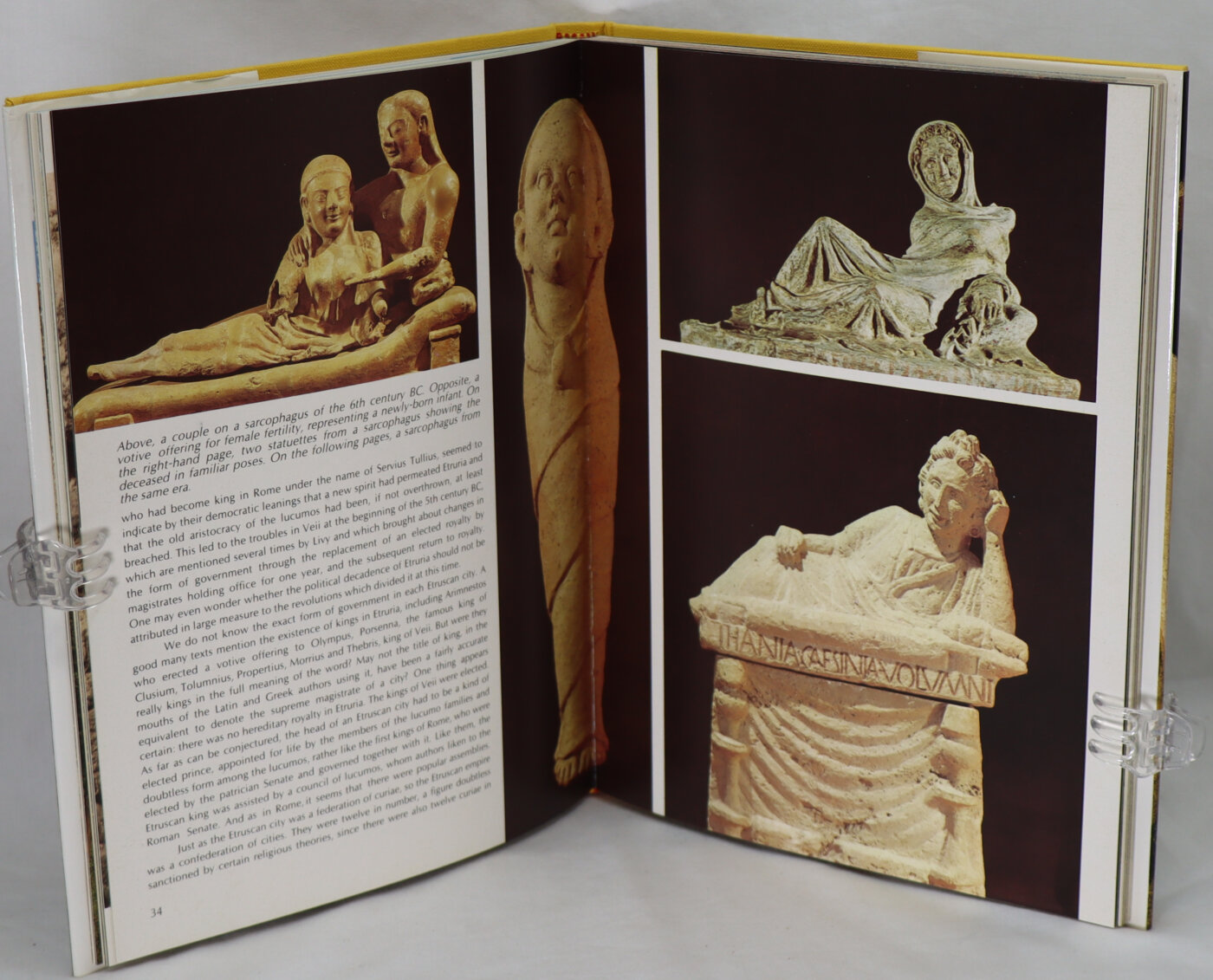The Etruscans.
By Aldo Massa
ISBN: OCLC:31860863
Printed: 1980
Publisher: Minerva.
| Dimensions | 23 × 28 × 2 cm |
|---|---|
| Language |
Language: English
Size (cminches): 23 x 28 x 2
Condition: Very good (See explanation of ratings)
Your items
Item information
Description
In the original dust jacket. Yellow cloth binding with gilt title on the spine and front board.
- We provide an in-depth photographic presentation of this item to stimulate your feeling and touch. More traditional book descriptions are immediately available
Note: This book carries a £5.00 discount to those that subscribe to the F.B.A. mailing list
Hardcover. Condition: Very Good. Dust Jacket Condition: Good color photographic dust jacket ; pictorial endpapers ; Contents : At the dawn of civilization — The Etruscan people and its mystery — History of the Etruscans — Knowledge and the arts — The art of divination.
The Etruscan civilization was an ancient civilization created by the Etruscans, a people who inhabited Etruria in ancient Italy, with a common language and culture who formed a federation of city-states. After conquering adjacent lands, its territory covered, at its greatest extent, roughly what is now Tuscany, western Umbria, and northern Lazio, as well as what are now the Po Valley, Emilia-Romagna, south-eastern Lombardy, southern Veneto, and western Campania.
A large body of literature has flourished on the origins of the Etruscans; however, the consensus among modern scholars is that the Etruscans were an indigenous population.The earliest evidence of a culture that is identifiably Etruscan dates from about 900 BC. This is the period of the Iron Age Villanovan culture, considered to be the earliest phase of Etruscan civilization,which itself developed from the previous late Bronze Age Proto-Villanovan culture in the same region, part of the central European Urnfield culture system. Etruscan civilization dominated Italy until it fell to the expanding Rome beginning in the late 4th century BC as a result of the Roman–Etruscan Wars; Etruscans were granted Roman citizenship in 90 BC, and only in 27 BC the whole Etruscan territory was incorporated into the newly established Roman Empire.
The territorial extent of Etruscan civilization reached its maximum around 500 BC, shortly after the Roman Kingdom became the Roman Republic. Its culture flourished in three confederacies of cities: that of Etruria (Tuscany, Latium and Umbria), that of the Po Valley with the eastern Alps, and that of Campania. The league in northern Italy is mentioned in Livy. The reduction in Etruscan territory was gradual, but after 500 BC, the political balance of power on the Italian peninsula shifted away from the Etruscans in favor of the rising Roman Republic.
The earliest known examples of Etruscan writing are inscriptions found in southern Etruria that date to around 700 BC. The Etruscans developed a system of writing derived from the Euboean alphabet, which was used in the Magna Graecia (coastal areas located in Southern Italy). The Etruscan language remains only partly understood, making modern understanding of their society and culture heavily dependent on much later and generally disapproving Roman and Greek sources. In the Etruscan political system, authority resided in its individual small cities, and probably in its prominent individual families. At the height of Etruscan power, elite Etruscan families grew very rich through trade with the Celts to the north and the Greeks to the south, and they filled their large family tombs with imported luxuries.
Want to know more about this item?

Related products
Share this Page with a friend













